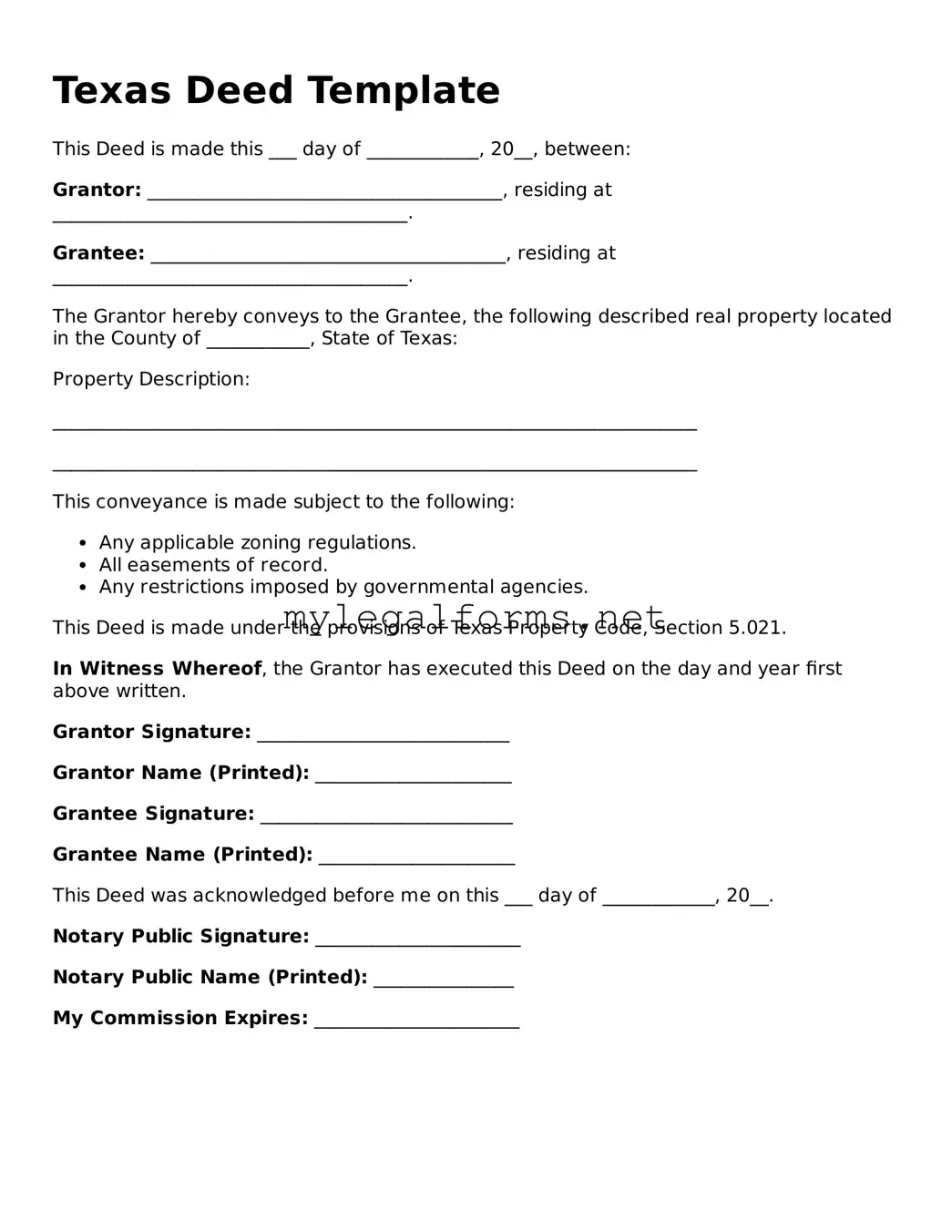Texas Deed Template
This Deed is made this ___ day of ____________, 20__, between:
Grantor: ______________________________________, residing at ______________________________________.
Grantee: ______________________________________, residing at ______________________________________.
The Grantor hereby conveys to the Grantee, the following described real property located in the County of ___________, State of Texas:
Property Description:
_____________________________________________________________________
_____________________________________________________________________
This conveyance is made subject to the following:
- Any applicable zoning regulations.
- All easements of record.
- Any restrictions imposed by governmental agencies.
This Deed is made under the provisions of Texas Property Code, Section 5.021.
In Witness Whereof, the Grantor has executed this Deed on the day and year first above written.
Grantor Signature: ___________________________
Grantor Name (Printed): _____________________
Grantee Signature: ___________________________
Grantee Name (Printed): _____________________
This Deed was acknowledged before me on this ___ day of ____________, 20__.
Notary Public Signature: ______________________
Notary Public Name (Printed): _______________
My Commission Expires: ______________________
